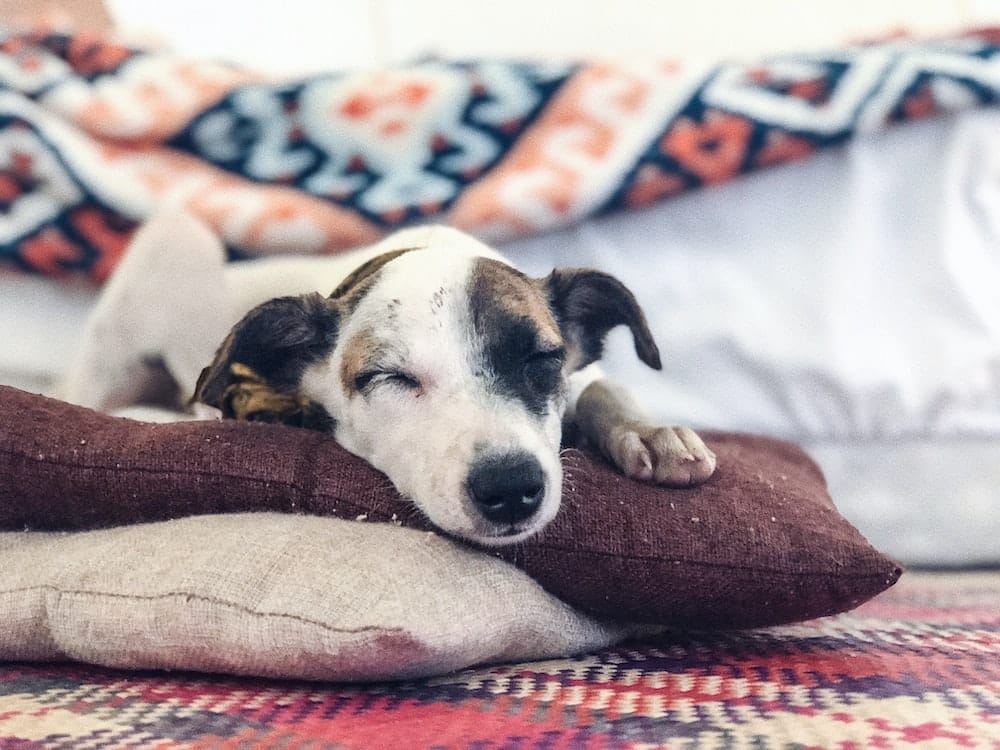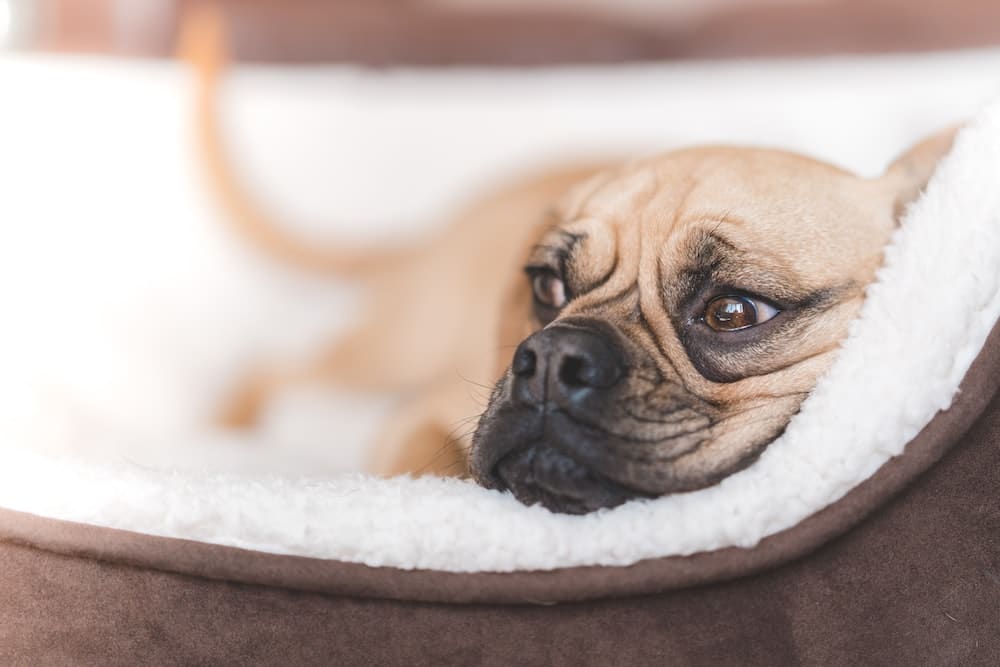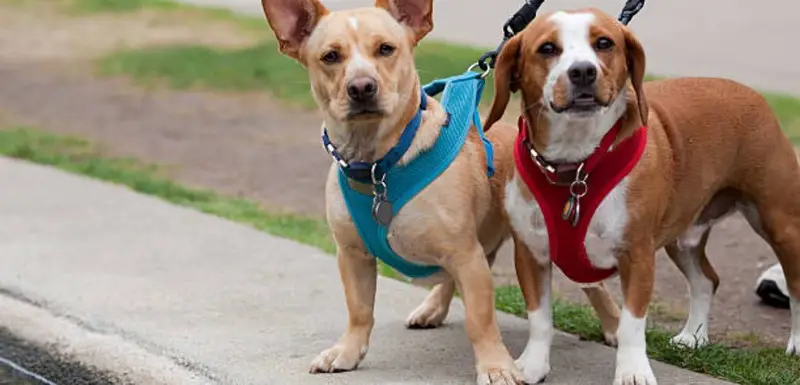In the world of pet accessories, one question often lingers in the minds of dog owners: should their furry companions sleep with a harness on?
While some may argue that it provides a sense of safety and security, others worry about the potential discomfort it may cause during rest.
As dog lovers ourselves, we understand the importance of ensuring our pets’ well-being, so join us as we explore the pros and cons of allowing your dog to snooze with a harness, ultimately helping you make the best decision for your four-legged friend.
This image is the property of images.unsplash.com.
The Purpose of a Dog Harness
A dog harness serves multiple purposes, but one of the main reasons to use a harness is to ensure safety and control while walking your furry friend. Collars can strain a dog’s neck and throat, potentially leading to injuries, throat irritation, or even damage to the trachea. A harness distributes the pressure more evenly across the dog’s body, reducing the risk of such injuries and providing better control for the owner.
Additionally, a dog harness can be beneficial during physical activities such as hiking or running. It provides support and prevents strains or injuries to the dog’s neck and back, allowing for a comfortable experience.
Pros of Sleeping with a Harness On
Added sense of security for anxious dogs
Wearing a harness during sleep can provide an added sense of security for anxious or nervous dogs. The gentle pressure of the harness can provide a comforting effect, making them feel more secure and reducing anxiety levels. This can be particularly helpful for rescue dogs or those with a history of trauma.
Prevention of neck injuries during restless nights
Restless nights can lead to dogs tangling themselves in blankets or getting caught in uncomfortable positions. By wearing a harness during sleep, the risk of neck injuries from getting tangled or trapped is significantly reduced. The harness acts as a buffer and prevents excessive strain on the neck area.
More effortless mobility during nighttime emergencies
In the event of an emergency during the night, a dog with a harness on can be easily and quickly maneuvered without causing discomfort. Whether it’s guiding them safely out of the house during a fire or helping them onto a pet carrier for a trip to the vet, having a harness on makes it easier to control and move the dog, ensuring their safety.
Cons of Sleeping with a Harness On
Potential discomfort for the dog
Sleeping with a harness on may cause discomfort, mainly if the dog is not accustomed to wearing one. Some dogs may find the feeling of being restricted or restrained uncomfortable, leading to restlessness and difficulty sleeping. It is essential to introduce the harness gradually and observe the dog’s behavior to ensure they can sleep comfortably.
Restriction of natural movements during sleep
Dogs naturally move and adjust their position while sleeping to find the most comfortable spot. Wearing a harness can limit these natural movements, which may disrupt their sleep patterns and prevent them from fully relaxing. It’s essential to balance the dog’s freedom of movement and the security offered by the harness.
Factors to Consider
Before deciding whether your dog should sleep with a harness on, several factors must be considered. These factors will help you determine if it is appropriate and beneficial for your furry companion.
Dog’s breed and size
Different breeds and sizes of dogs have varying physical needs and tolerances. Larger breeds may benefit from the added support of a harness during sleep, while smaller dogs may find it less necessary. Consider your dog’s breed and size when deciding whether to use a harness for sleeping.
Type of harness
Not all harnesses are created equal. Some are designed specifically for walking, while others are more suitable for extended use, including sleep. Look for harnesses that are comfortable, breathable, and provide a secure fit without being too restrictive. Different designs and materials may suit different dogs, so choose one that aligns with their needs and preferences.
Dog’s sleeping habits and preferences
Observing your dog’s sleep habits and preferences can provide valuable insights. If your dog moves around a lot during sleep or tends to get tangled in blankets, a harness may be beneficial. On the other hand, if your dog sleeps peacefully and shows no signs of discomfort or distress, a harness may not be necessary.
This image is the property of cdn.mos.cms.futurecdn.net.
Harness Material & Design
When choosing a harness for sleeping, it is essential to consider the material and design. Opt for a comfortable and breathable material that will not cause irritation or discomfort for your dog. Look for adjustable straps that allow for a secure and customized fit. This way, you can ensure that the harness is snug enough to stay in place during sleep without being too tight or causing chafing.
Proper Fit and Adjustment
Once you have selected a suitable harness, it is crucial to ensure the proper fit and adjustment. A harness that is too tight can cause discomfort and restrict movement, while a loose-fitting harness may be ineffective and potentially dangerous. Check that the harness fits snugly around your dog’s body without digging into their skin. Regularly inspect the harness for any signs of chafing or rubbing, making necessary adjustments as needed.
This image is the property of images.unsplash.com.
Alternatives to Sleeping with a Harness On
If sleeping with a harness on does not seem like the best option for your dog, there are alternatives to consider. These alternatives can provide a safe and comfortable sleeping environment for your furry friend.
Using a crate or designated sleeping area
Creating a designated sleeping area or crate for your dog can provide a safe and secure resting space. Ensure that the area is cozy, quiet, and free from any potential hazards. This can help your dog feel secure and reduce any potential anxiety they may experience during sleep.
Utilizing calming aids or anxiety-reducing techniques
If your dog experiences anxiety or restlessness during sleep, there are various calming aids and techniques available. These can include diffusing lavender oil, using calming music or white noise machines, or utilizing anxiety wraps or vests. Consulting with a veterinarian can help you determine the best options for your dog’s specific needs.
Consultation with a Veterinarian
It is always a good idea to consult a veterinarian before making any decisions regarding your dog’s sleep routine. They can provide expert advice based on your individual dog’s needs, taking into account their health, breed, and behavior. Additionally, any underlying health conditions or concerns can be addressed, prioritizing your dog’s well-being and comfort.
This image is the property of image.petmd.com.
Signs of Discomfort or Distress
When allowing your dog to sleep with a harness on, it is essential to monitor for any signs of discomfort or distress. Watch for adverse reactions or behavior changes, such as excessive scratching, restlessness, or difficulty settling down. If you notice any signs of discomfort, it may be necessary to adjust or discontinue the use of the harness during sleep.
Conclusion
Deciding whether your dog should sleep with a harness on is a personal choice for dog owners. While harnesses can provide added security, prevent neck injuries, and aid in mobility during emergencies, they may not be suitable for every dog. It is essential to consider your dog’s individual needs, preferences, and comfort when making this decision. Whether you choose a harness or one of the alternatives mentioned, prioritizing your dog’s well-being and comfort should always be the top priority.
This image is property of www.derppets.com.














































